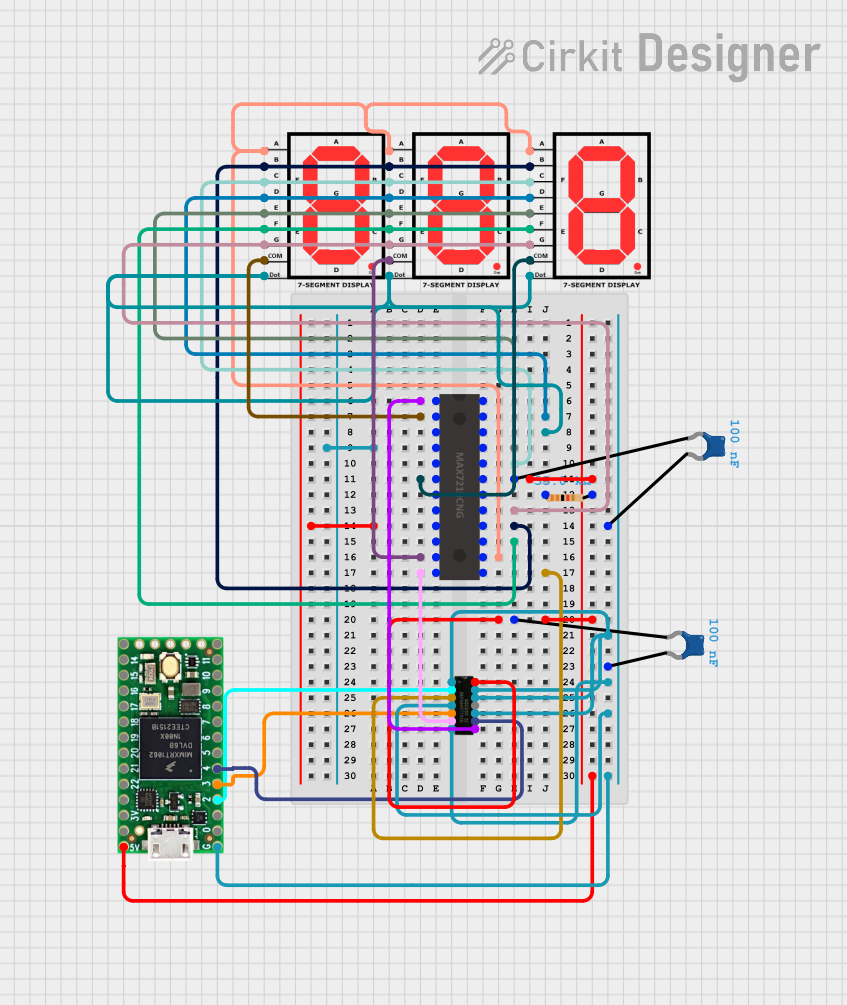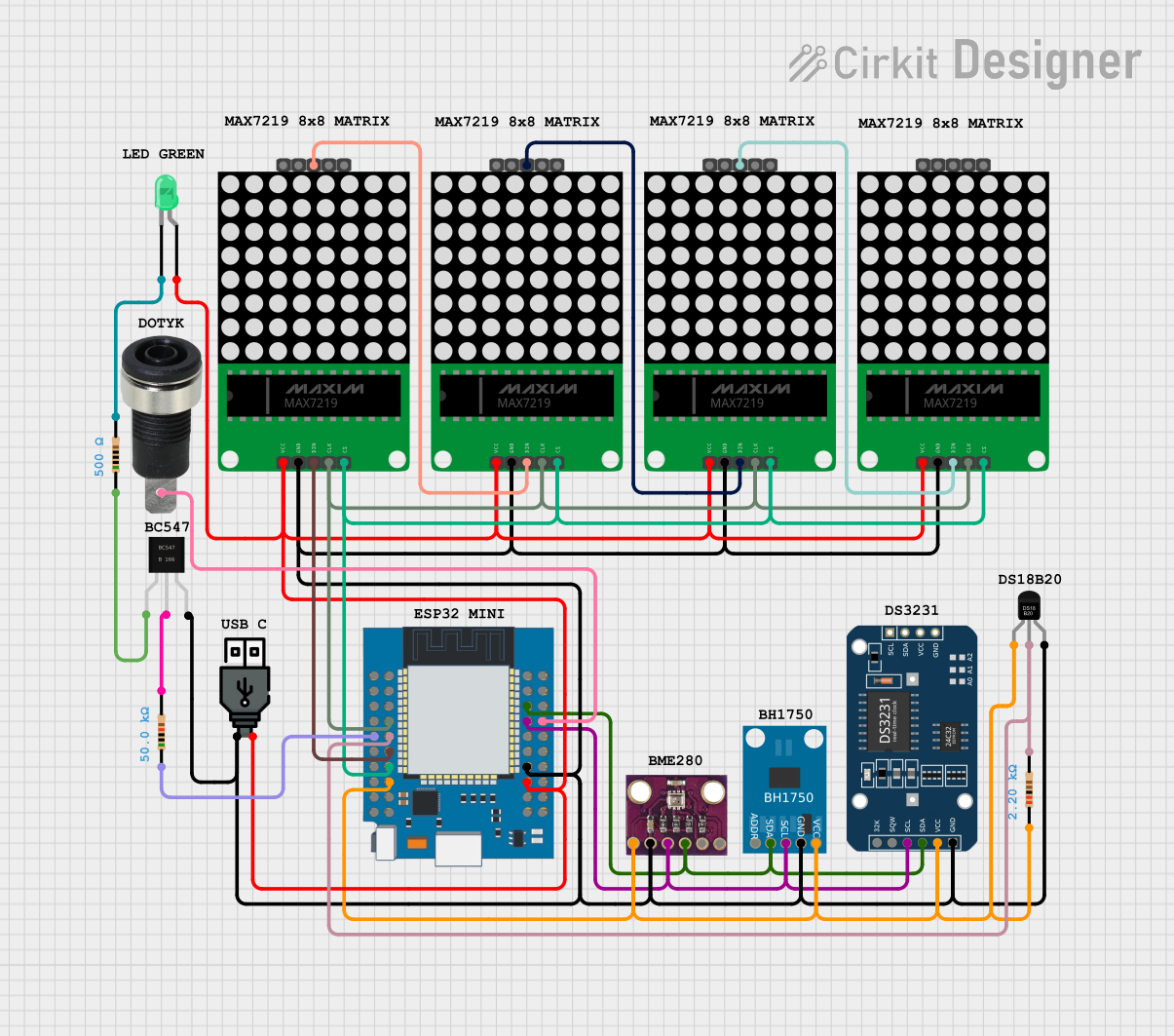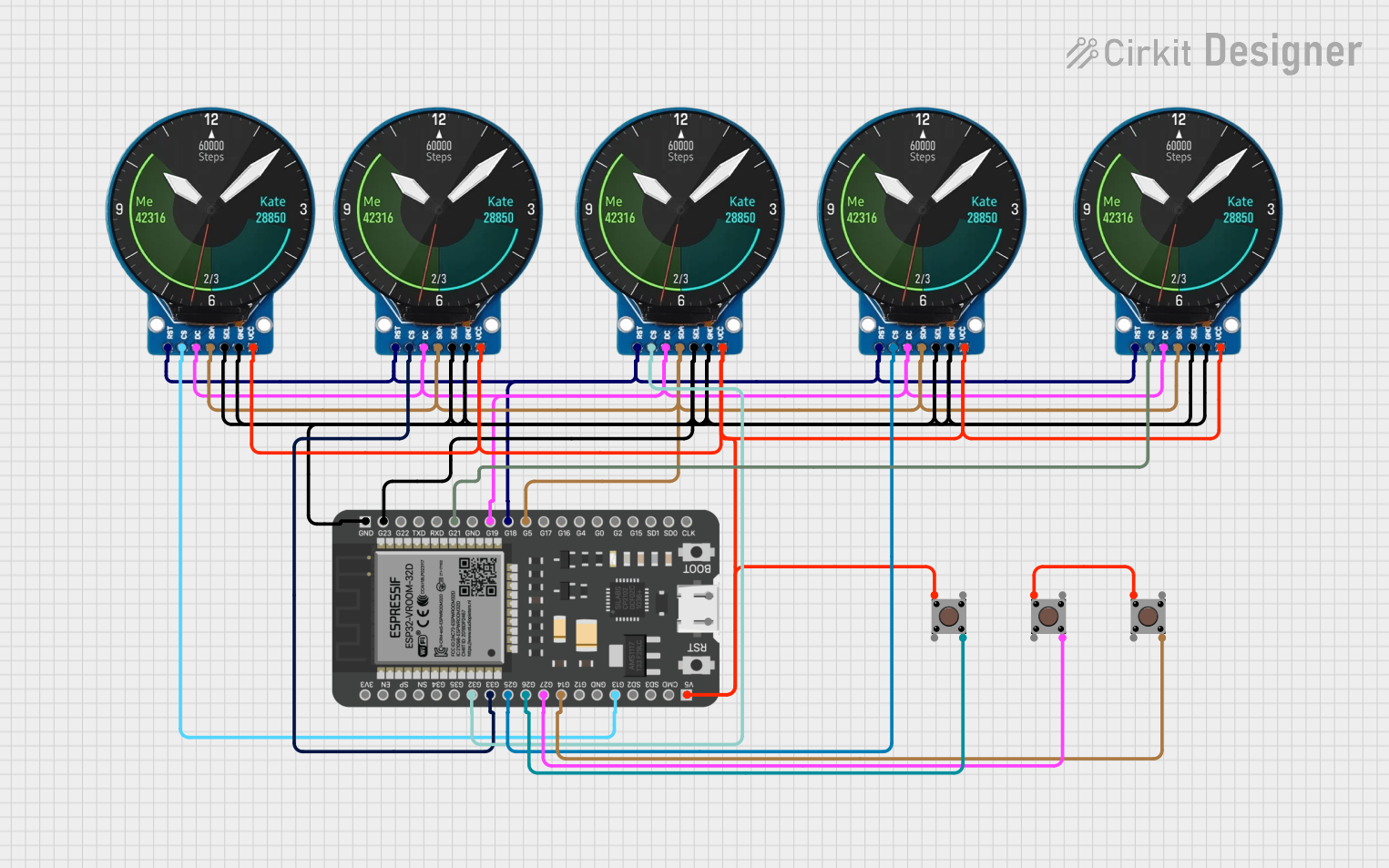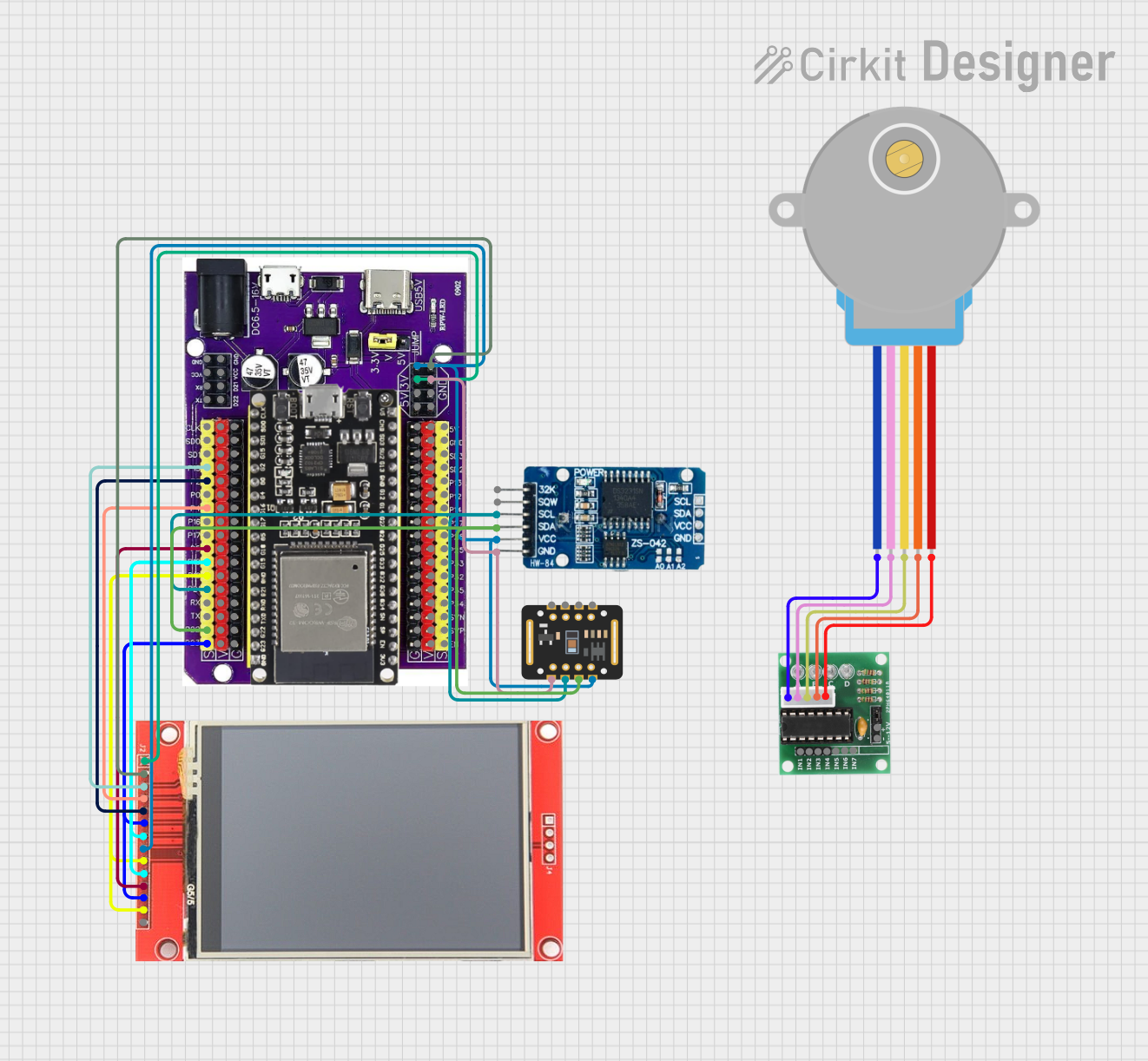
How to Use Proto PSA-1 Max7219 Display: Examples, Pinouts, and Specs

 Design with Proto PSA-1 Max7219 Display in Cirkit Designer
Design with Proto PSA-1 Max7219 Display in Cirkit DesignerIntroduction
The Proto PSA-1 Max7219 Display is a versatile 8x8 LED matrix module designed for efficient and compact visual output. Manufactured by Proto Supplies, this display module is powered by the MAX7219 LED driver IC, which simplifies the control of multiple LEDs using minimal microcontroller pins. The module is ideal for applications requiring numeric, alphanumeric, or graphical displays.
Common applications include:
- Digital clocks and counters
- Scrolling text displays
- Sensor data visualization
- Gaming interfaces
- Educational and hobbyist projects
Explore Projects Built with Proto PSA-1 Max7219 Display

 Open Project in Cirkit Designer
Open Project in Cirkit Designer
 Open Project in Cirkit Designer
Open Project in Cirkit Designer
 Open Project in Cirkit Designer
Open Project in Cirkit Designer
 Open Project in Cirkit Designer
Open Project in Cirkit DesignerExplore Projects Built with Proto PSA-1 Max7219 Display

 Open Project in Cirkit Designer
Open Project in Cirkit Designer
 Open Project in Cirkit Designer
Open Project in Cirkit Designer
 Open Project in Cirkit Designer
Open Project in Cirkit Designer
 Open Project in Cirkit Designer
Open Project in Cirkit DesignerTechnical Specifications
The Proto PSA-1 Max7219 Display is built for ease of use and high performance. Below are its key technical details:
General Specifications
| Parameter | Value |
|---|---|
| Operating Voltage | 5V DC |
| Operating Current | ~40mA (typical) |
| LED Matrix Dimensions | 8x8 (64 LEDs) |
| Driver IC | MAX7219 |
| Communication Protocol | SPI (Serial Peripheral Interface) |
| Module Dimensions | 32mm x 32mm |
Pin Configuration and Descriptions
The module features a 5-pin header for interfacing with a microcontroller. The pinout is as follows:
| Pin Name | Description |
|---|---|
| VCC | Power supply input (5V DC) |
| GND | Ground connection |
| DIN | Serial data input (connect to microcontroller MOSI) |
| CS | Chip select (active low, used to enable the module) |
| CLK | Clock input (connect to microcontroller SCK) |
Usage Instructions
How to Use the Proto PSA-1 Max7219 Display in a Circuit
- Power the Module: Connect the VCC pin to a 5V power source and the GND pin to ground.
- Connect to a Microcontroller: Use the SPI interface to connect the DIN, CS, and CLK pins to the corresponding pins on your microcontroller.
- Install Required Libraries: If using an Arduino, install the
LedControllibrary, which simplifies communication with the MAX7219 IC. - Write and Upload Code: Use the provided example code or write your own to control the display.
Important Considerations and Best Practices
- Power Supply: Ensure a stable 5V power source to avoid flickering or damage to the LEDs.
- Current Limiting: The MAX7219 IC includes built-in current limiting, so no external resistors are required for the LEDs.
- Daisy-Chaining: Multiple modules can be connected in series for larger displays. Connect the DOUT pin of one module to the DIN pin of the next.
- Orientation: Ensure the module is oriented correctly when mounting or connecting to avoid reversed text or graphics.
Example Code for Arduino UNO
Below is an example of how to use the Proto PSA-1 Max7219 Display with an Arduino UNO:
#include <LedControl.h> // Include the LedControl library
// Initialize the LedControl object
// Parameters: DIN pin, CLK pin, CS pin, number of displays
LedControl lc = LedControl(12, 11, 10, 1);
void setup() {
// Wake up the MAX7219 and clear the display
lc.shutdown(0, false); // Turn off power-saving mode
lc.setIntensity(0, 8); // Set brightness level (0-15)
lc.clearDisplay(0); // Clear the display
}
void loop() {
// Display a simple pattern on the 8x8 matrix
for (int row = 0; row < 8; row++) {
lc.setRow(0, row, 0b10101010); // Set alternating LEDs in each row
delay(200); // Wait for 200ms
}
}
Notes on the Code
- The
LedControllibrary simplifies communication with the MAX7219 IC. - Adjust the brightness using
setIntensity(). The value ranges from 0 (dim) to 15 (bright). - The
setRow()function allows you to control individual rows of the LED matrix.
Troubleshooting and FAQs
Common Issues and Solutions
No Display Output:
- Verify all connections, especially the SPI pins (DIN, CS, CLK).
- Ensure the module is powered with a stable 5V supply.
- Check that the
LedControllibrary is installed and included in your code.
Flickering LEDs:
- Ensure the power supply can provide sufficient current (~40mA per module).
- Avoid long or thin wires for power connections to reduce voltage drops.
Incorrect or Reversed Display:
- Verify the orientation of the module. The pin header should match the expected layout.
- Check the wiring of the SPI pins to ensure they are connected to the correct microcontroller pins.
Unable to Daisy-Chain Modules:
- Ensure the DOUT pin of one module is connected to the DIN pin of the next.
- Update the
LedControlobject initialization to reflect the total number of modules.
FAQs
Q: Can I use a 3.3V microcontroller with this module?
A: The MAX7219 IC requires a 5V power supply, but its logic pins are 3.3V-tolerant. Use level shifters if you encounter communication issues.
Q: How many modules can I daisy-chain?
A: Theoretically, up to 8 modules can be daisy-chained. However, performance may degrade with more modules due to signal attenuation.
Q: Can I display custom graphics?
A: Yes, you can use the setRow() or setColumn() functions to create custom patterns or animations.
By following this documentation, you can effectively integrate the Proto PSA-1 Max7219 Display into your projects for a wide range of applications.